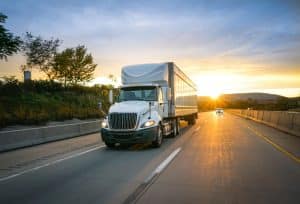Why Truckers Shouldn’t Worry about Automation Eliminating Their Jobs
 Truck and car manufacturers are continually working to manufacture vehicles that can drive themselves. These manufacturers claim that automated trucks – with artificial intelligence, robotics, and machine learning – can help reduce costs and increase safety. Truckers shouldn’t worry yet, though. The days when trucks will be automated enough that drivers won’t be needed is far in the future.
Truck and car manufacturers are continually working to manufacture vehicles that can drive themselves. These manufacturers claim that automated trucks – with artificial intelligence, robotics, and machine learning – can help reduce costs and increase safety. Truckers shouldn’t worry yet, though. The days when trucks will be automated enough that drivers won’t be needed is far in the future.
A Harvard Business Review report examined the concerns about truck automation and the continual need for truck drivers. Truck drivers move more than 70% of US freight, by weight, which is why many people are concerned that self-driving trucks could cost millions of trucking jobs each year. The journal cited three main reasons why the fears about truck drivers losing their jobs any time soon is unfounded.
Trucks can’t do everything themselves
Truck drivers perform the following tasks that self-driving trucks simply can’t do:
- Unloading and loading the cargo, and then securing the cargo on the truck
- Doing safety inspections on truck parts (like tires and glass) unaffected by computer controls
- Providing customer service upon shipment
- Providing oversight of the machines (or the drivers) in a fleet, to ensure there are no technical or technological errors
- Refueling on long-haul trips
Perhaps the biggest role, though, is in repairs and maintenance. While a sensor may say that your tire pressure is low, it is the truck driver who has to refill the tire. Even if a computer or a machine does repairs, someone has to keep those machines running, too. Remember: a computer can only do what it’s programmed to do, and nothing more. A system update, error, or failure can affect the entire process, so someone needs to be there to ensure the system works, too.
Complete automation is not close to being ready
There are five different levels of automation from complete human control (level 1) to complete automation (level 5). The Harvard Business Review found that only at level 4 does the truck start operate itself. Most truck technology is still focused on level 2 or level 3 automation, where the truck performs a number of safety and other checks but the human drives the truck.
Researchers also found that truck manufacturers are primarily focused on self-driving trucks for long interstate hauls and not shorter in-state hauls. Long-haul truck transports involve about a quarter of all heavy truck drivers. The chance of all of those jobs disappearing right away is incredibly low, given that some trucking industries are likely to wait until they’re certain automation is the better option.
Not that many people currently drive trucks
The number of drivers with a commercial driver’s license was about 1.8 million in 2018. Based on that figure and other factors, the number of truck drivers vulnerable to automation is more likely about 456,000.
Of course, in a state where about 1 in every 11 jobs is in the trucking industry, that can be a worrisome number. Just remember that we’re not there yet. In 2018, the trucker shortage reached more than 60,000, and the American Trucking Association thinks that it will reach more than 160,000 positions will go unfulfilled in the next decade. There are still plenty of jobs out there, and automation isn’t moving fast enough to fill them. By the time it does, the chances are good that drivers and other members of the industry would have already been trained to adjust.
Safety concerns about self-driving trucks and automated trucks
The overriding concern about self-driving trucks is whether they can ever replace humans. Every day, human truck drivers need to make numerous calculations about vehicle speed, which lanes to use, when to merge, how to respond to other drivers, and when to slow down. While artificial intelligence and other technologies are advancing, there are still major concerns about whether automated trucks can ever replace humans.
Another major concern is how to test self-automation to ensure fewer truck accidents. There are limits to computer simulation. To fully understand how automation works, the self-driving trucks will need to interact with other trucks on the road.
At Larson Law, our attorneys are keeping current with legal issues in the truck industry. If you were injured in a truck accident, or a loved one was killed, call us at 701-484-HURT or fill out our contact form to discuss your rights with an experienced lawyer. We have offices in Minot and Bismarck.

Mark Larson is a Certified Civil Trial Specialist and Certified Civil Pre-Trial Specialist focusing on personal injury, car accidents, wrongful death, and oil field claims. Since 1979, Larson Law has served the injured throughout North Dakota. Read more about Mark V. Larson.
